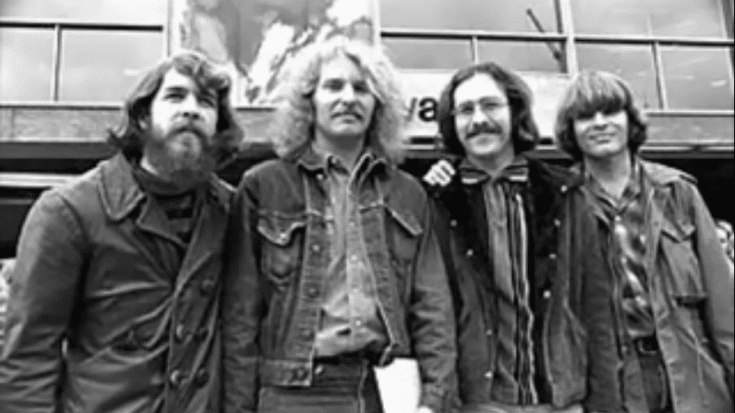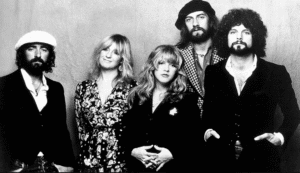10 Rock Bands That Broke Up at Their Peak

via masterofacdcsuckaS / YouTube
Making it big in the industry is a dream that many chase but only a few catches. Imagine spending years pouring your heart into your music, performing wherever you can, all the while hoping for that one big chance that might never show up. But then, there are those lucky few who hit the jackpot and soar up to the stars of music fame. Yet, as they quickly find out, reaching the top might seem like the goal, but the real test is staying there.
Music bands often face tough times because of sudden fame, differences in personality, fights over money, or other pressures from outside. These issues have caused many famous bands to break apart. Being constantly watched by fans, followed by paparazzi, and judged by critics can be overwhelming. It’s said that being in the music industry is too tempting to leave but too tough to stick around.
Given this, some bands decide to step down when they’re on top, leaving fans wondering what might have been if they had continued. Would they have stayed legends or faded away? We might never know, but here are ten bands that ended their journey at the height of their fame.
Creedence Clearwater Revival
View this post on Instagram
Among the most respected but sometimes overlooked bands is Creedence Clearwater Revival (CCR), originally named the Blue Velvets when they formed in 1959. They waited until 1968 to release their first album. In just four years, they delivered seven albums before splitting to pursue solo careers in 1972.
CCR hit the ground running with their debut album, loved by fans for hit singles like ‘Suzie Q’ and ‘I Put a Spell on You’. This strong start was quickly followed by more hits, including ‘Proud Mary’ and ‘Bad Moon Rising’. But as the saying goes, the brighter a candle burns, the quicker it melts. Accusations of John Fogerty overpowering the band’s creative process led his brother Tom Fogerty to leave in 1971. The tensions culminated with their final album, ‘Mardi Gras’, which did not do well, and soon after, the band parted ways for good.
Alice In Chains
View this post on Instagram
Alice In Chains, regarded as one of the greatest bands by many rock enthusiasts, started making waves soon after Jerry Cantrell and Sean Kinney formed it in 1987, gaining more traction when Mike Starr and Layne Staley joined. Staley, initially a drummer, became the band’s standout vocalist.
Their debut album ‘Facelift’, launched in 1990, initially saw a lukewarm reception but rocketed in popularity with the hit single ‘Man in the Box’. They followed up with the critically acclaimed ‘Dirt’ in 1992 and several more hits until 1996. Unfortunately, after Layne Staley stepped back from the public eye following personal tragedies, he passed away in 2002. Despite this, the band reunited in 2005 with new vocalist William DuVall and continues to perform.
Oasis
View this post on Instagram
Nearly everyone knows ‘Wonderwall’, a track from Oasis that’s become a staple on UK radios and beyond. Despite its massive success, it was just one part of their explosive emergence in the mid-90s, following the debut album ‘Definitely Maybe’ in 1994. The band’s success skyrocketed with ‘What’s the Story Morning Glory?’, which topped charts worldwide.
However, the volatile relationship between the Gallagher brothers, Liam and Noel, couldn’t withstand the pressures of fame, leading to the band’s breakup in 2009. While fans occasionally hear rumors of a reunion, they have yet to come to pass.
Misfits
View this post on Instagram
Misfits, a band that made a significant impact on rock music, also faced internal disorder that led to their breakup. Their first album took nearly 20 years to release because of legal troubles and inner conflicts. After releasing ‘Walk Among Us’ in 1982, the band didn’t last more than 18 months.
The band saw firings mid-tour, arrests, and on-stage drama that eventually led to its dissolution despite a strong fanbase. They settled their legal battles and reformed in 1995 without original member Glenn Danzig, releasing four studio albums with ‘The Devil’s Rain’ as the latest.
These stories of bands reaching the pinnacle of success only to disband at their peak remind us of the unpredictable and often tumultuous nature of the music industry.
The Sex Pistols
View this post on Instagram
The Sex Pistols burst onto the scene as a symbol of raw discontent, with their notorious 1977 line-up consisting of Johnny Rotten, Sid Vicious, Paul Cook, and Steve Jones. United in their distaste for nearly everything—from each other to societal norms—the band’s existence was brief but explosive. Though the turbulent quartet was together for scarcely a year, they left an indelible mark that later punk groups could only aspire to match.
Coming together in 1975 and solidifying with Vicious in early 1977, they touched fame that previous December with the ‘Bill Grundy Incident’. On live TV, a tipsy Grundy provoked Steve Jones into insulting him, an event that ended Grundy’s daytime TV career and catapulted the Pistols into notoriety. They upended established norms once more with ‘God Save the Queen’ in March 1977, a single that met huge resistance from major retailers, and which was notoriously suppressed on the charts during Queen Elizabeth II’s Jubilee.
After a troubled tour of the US between 1977 and 1978, the Sex Pistols called it quits. Rotten moved on to create Public Image Ltd, while the troubled Sid Vicious left the world at 21 in 1979. Their legacy, however, endures as a cultural juggernaut that changed the face of music.
The Zombies
View this post on Instagram
Formed by Rod Argent and Colin Blunstone in the early ’60s, they were a beacon of potential, even seen as rivals to The Beatles. Their first album featured ‘She’s Not There’, a hit worldwide—save for in their homeland, the UK. By the time their second offering, ‘Odessey and Oracle’, and its prime single ‘Time of the Season’ caught fire in North America, the group had already disbanded.
Years later, ‘Time of the Season’ would become a beloved classic, though the band would not reunite until the late ’80s, and not perform the hit live with the original lineup until nearly three decades later. Had The Zombies weathered just a bit longer in their original form, their reputation might now stand shoulder to shoulder with some of rock’s most legendary names.
Simon and Garfunkel
View this post on Instagram
In stark contrast to the burgeoning rock and roll scene of the mid-1960s, Simon and Garfunkel brought thoughtful lyrics and harmonious sound to the forefront. Their partnership thrived for years, but as they crafted their album ‘Bridge Over Troubled Water’, both Paul Simon and Art Garfunkel stood firm on their artistic visions, ultimately realizing they could realize their ambitions better separately.
Garfunkel pursued a respectable solo career, while Simon blossomed into a superstar. His music, steeped in folk tradition, later embraced global sounds, culminating in the hit album ‘Graceland’. The split was bittersweet for fans, but it paved the way for new creative horizons for both artists.
The Police
View this post on Instagram
The Police, comprised of Sting, Andy Summers, and Stewart Copeland, did not share the kind of childhood bonds many great bands do. They quickly formed a strong connection on the club scene, but as they gained popularity and wealth, their initial closeness unraveled. With Sting at the helm of songwriting, tensions rose. By 1983, despite their colossal success, internal squabbles were rife, and by the end of their massive ‘Synchronicity’ tour in 1984, The Police concluded their joint adventure.
Cream
View this post on Instagram
Cream, featuring legends Eric Clapton, Ginger Baker, and Jack Bruce, was as volatile as it was visionary. Deep-seated animosity between Baker and Bruce predated the band, often culminating in on-stage confrontations. Clapton initially tolerated this, yet by 1968, the constant conflict pushed him to the brink, signaling the end of Cream’s brief but impactful tenure.
Crosby, Stills, Nash, & Young (1970)
View this post on Instagram
Crosby, Stills, Nash, & Young captured the era’s spirit with songs that resonated with a nation in flux. Despite their success, their strong individual personalities and intense lifestyles hastened their dissolution. Compounded by inner rivalries and passions, including shared affection for Rita Coolidge, and Young’s tendency to hoard his best work for solo efforts, the super-group hit an impasse. By mid-1970, the band members went their separate ways, temporarily ending a powerful musical chapter.



















